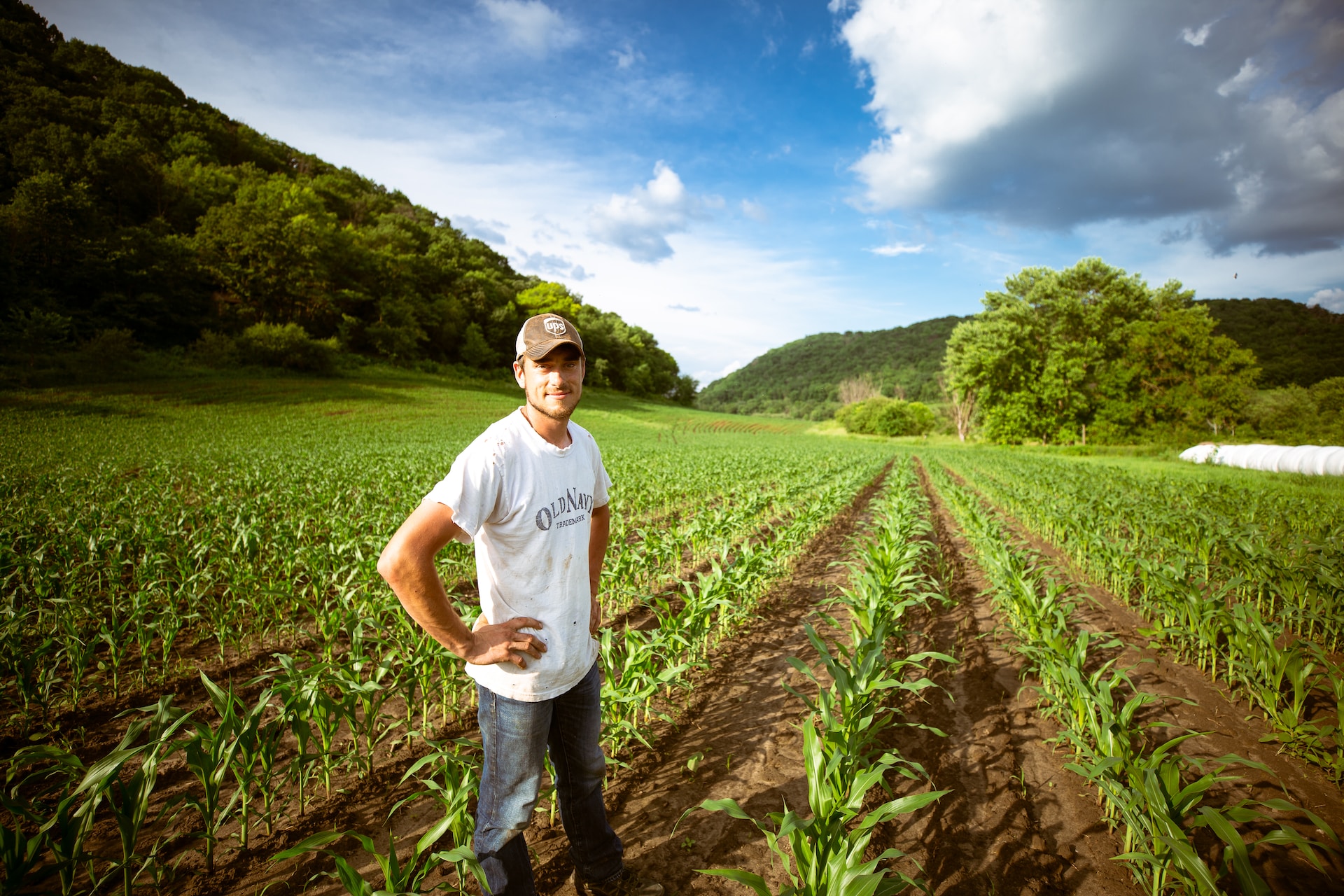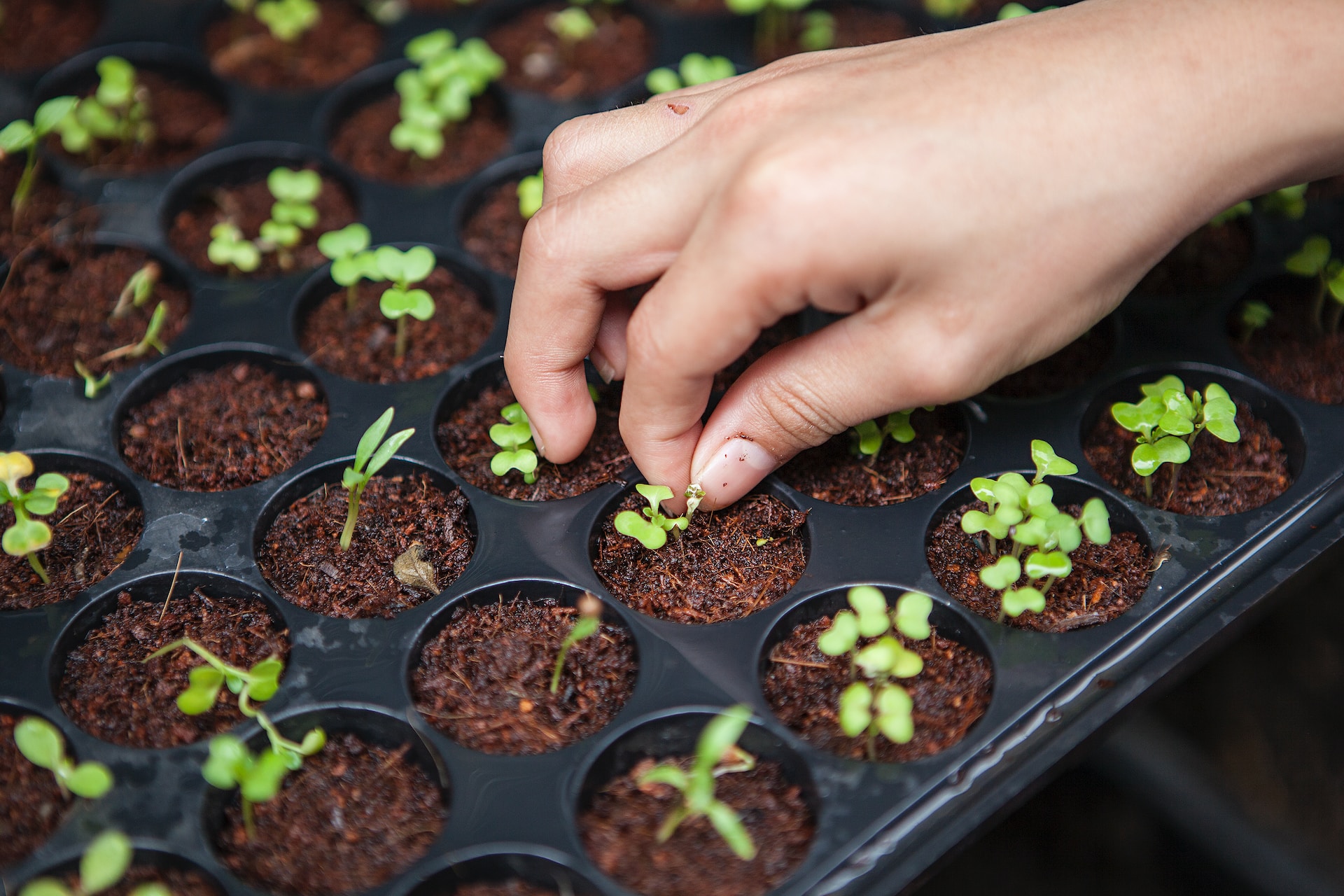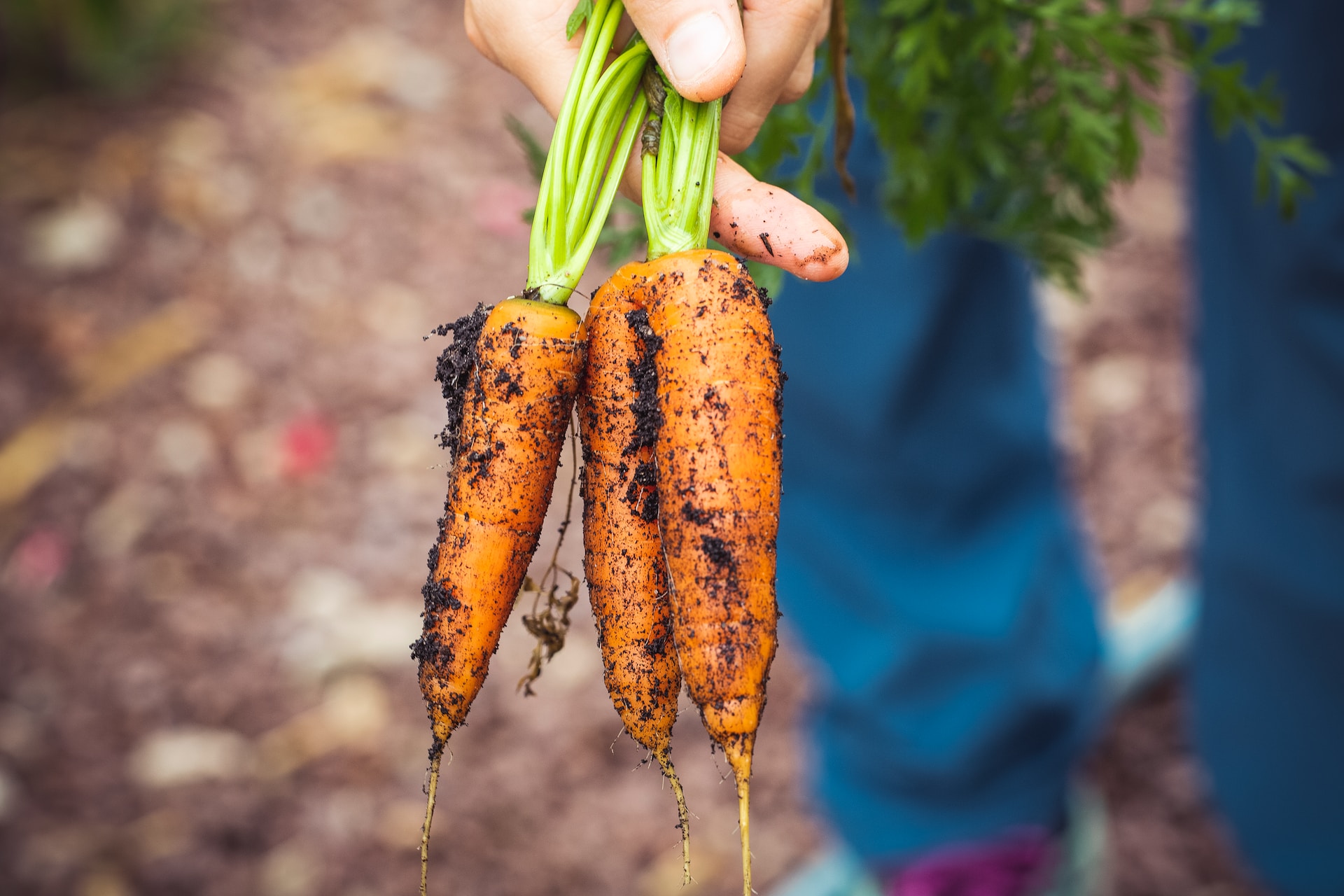When we think about farmers, we often envision individuals who possess remarkable self-sufficiency, capable of producing the food and resources necessary for their own sustenance. However, in today’s complex and interconnected world, where agriculture is heavily influenced by technological advancements and global trade, the question arises: Are farmers truly self-sufficient?
To understand the concept of self-sufficiency in farming, it is essential to define what it entails. Self-sufficiency, in the context of agriculture, refers to a farmer’s ability to independently meet their agricultural needs without relying heavily on external resources. This includes producing a wide range of crops or raising livestock for food, fiber, and other agricultural products necessary for their own consumption or local markets.
The notion of self-sufficiency holds significant importance within the agricultural sector. It empowers farmers by reducing their dependency on external factors such as fluctuating market prices, availability of inputs, or political instability. Additionally, self-sufficient farming practices promote food security, resilience, and sustainability within communities, as they lessen the vulnerability associated with relying heavily on external sources.
However, in recent times, modern farming practices have evolved considerably, shaped by advancements in technology, mechanization, and global trade networks. These changes have transformed the agricultural landscape, impacting the traditional notion of self-sufficiency among farmers.
In the following sections, we will delve deeper into the various aspects that influence self-sufficiency in farming. We will explore the challenges faced by farmers in achieving self-sufficiency, examine different agricultural sectors in relation to self-sufficiency, and discuss the role of government policies and support. Furthermore, we will look ahead to the future of self-sufficiency in farming and potential solutions to enhance it in an increasingly interconnected world. By exploring these aspects, we can gain a comprehensive understanding of the extent to which farmers can truly achieve self-sufficiency in today’s agricultural practices.
Overview of Modern Farming Practices
In recent decades, farming practices have undergone a profound transformation, driven by advancements in technology, scientific research, and the need to meet growing global food demand. Modern agriculture is characterized by the application of innovative techniques and tools that enhance efficiency and productivity on the farm.
One significant aspect of modern farming is the utilization of advanced machinery and equipment. Farmers now have access to a wide range of mechanized tools such as tractors, combines, and harvesters, which greatly streamline tasks such as planting, cultivation, and harvesting. These machines enable farmers to cover larger areas in less time, boosting productivity and reducing labor requirements.
Use of Technology and Precision Farming
Technology plays a pivotal role in modern farming practices. Precision farming, also known as smart farming or digital agriculture, integrates various technologies to optimize crop production. Farmers employ tools like GPS systems, drones, and remote sensing devices to collect data on soil conditions, plant health, and weather patterns. This data helps them make informed decisions regarding irrigation, fertilization, and pest management, resulting in more precise resource allocation and reduced environmental impact.
Moreover, genetic engineering and biotechnology have revolutionized crop cultivation. Scientists have developed genetically modified organisms (GMOs) with enhanced traits, such as resistance to pests, diseases, or herbicides. These genetically modified crops offer higher yields, improved nutritional content, and increased tolerance to environmental stressors, contributing to improved productivity and crop quality.
Reliance on External Inputs
Despite the advancements in technology, modern farming practices often involve a significant reliance on external inputs. Farmers commonly utilize synthetic fertilizers to replenish soil nutrients and increase crop yields. Pesticides and herbicides are employed to control pests, diseases, and weeds that can significantly impact crop health and productivity.
Additionally, the use of high-yielding hybrid seeds has become prevalent in modern agriculture. These seeds are bred to exhibit specific traits, such as disease resistance or higher yields. However, they often require farmers to purchase new seeds each planting season, reducing their self-sufficiency in terms of seed production.
The reliance on external inputs can pose challenges to achieving complete self-sufficiency. Farmers must ensure consistent access to these inputs, which may be affected by factors such as availability, cost, or dependency on external suppliers. External factors like fluctuating market prices or disruptions in supply chains can influence a farmer’s ability to sustain their operations independently.
Factors Affecting Self-Sufficiency in Farming
Land Availability and Size of Farms
Land availability and the size of farms play a crucial role in determining the self-sufficiency of farmers. Limited land resources can restrict the diversity and scale of agricultural production. Farmers with smaller land holdings may face challenges in achieving complete self-sufficiency as they have less space to grow a variety of crops or raise a significant number of livestock. Conversely, farmers with larger land holdings have more opportunities to diversify their agricultural activities and produce a wider range of products.
Climate and Weather Conditions
Climate and weather conditions significantly impact agricultural productivity and the ability of farmers to achieve self-sufficiency. Extreme weather events such as droughts, floods, or heatwaves can devastate crops, leading to reduced yields and potential crop failures. Unfavorable climate patterns can disrupt the availability of water resources, affect pollination, and increase the prevalence of pests and diseases. These factors can make it challenging for farmers to maintain consistent production levels and achieve self-sufficiency.
Access to Water Resources
Access to water resources is vital for agricultural production and self-sufficiency. Adequate water supply is necessary for irrigation, livestock watering, and processing activities. Farmers located in areas with limited water resources may face difficulties in maintaining their agricultural operations. Dependence on rainfall alone can be unpredictable, especially in regions with erratic precipitation patterns. Efficient water management techniques, such as drip irrigation or rainwater harvesting, can help mitigate water scarcity challenges and enhance self-sufficiency.
Availability of Skilled Labor
The availability of skilled labor is crucial for achieving self-sufficiency in farming. Agricultural activities require specialized knowledge and expertise, ranging from crop management and animal husbandry to machinery operation and farm planning. Farmers heavily rely on skilled labor to ensure efficient and effective farm operations. However, in certain regions, there may be a shortage of skilled agricultural workers, leading to increased reliance on external labor or mechanization. The availability and training of skilled labor significantly influence a farmer’s ability to maintain self-sufficiency.
Economic Constraints and Financial Resources
Economic constraints and access to financial resources are significant factors affecting self-sufficiency in farming. Investment in agricultural infrastructure, machinery, technology, and inputs can be financially demanding. Farmers may face challenges in accessing affordable credit or financial support systems, which can hinder their ability to adopt modern farming practices or expand their operations. Insufficient financial resources can limit a farmer’s capacity to invest in sustainable and efficient agricultural practices, potentially impacting their self-sufficiency goals.
Examining Self-Sufficiency in Different Agricultural Sectors
Crop Farming
Crop farming is a fundamental component of agriculture, and its self-sufficiency depends on various factors. Achieving self-sufficiency in crop production can be challenging due to the diverse range of crops grown, each with unique requirements and vulnerabilities.
Challenges Faced in Achieving Self-Sufficiency
Crop farming faces challenges such as pests, diseases, climate fluctuations, and market demand fluctuations. Pests and diseases can affect crop health and reduce yields, necessitating the use of pesticides and fungicides. However, excessive reliance on these inputs may contradict the goal of self-sufficiency. Additionally, crop farmers must adapt to changing weather patterns, ensuring appropriate irrigation and crop selection to mitigate risks associated with extreme weather events. Moreover, market demand fluctuations can influence crop choices, making it challenging to maintain self-sufficiency if market-driven crop preferences do not align with the farmer’s needs.
Examples of Successful Self-Sufficient Crop Farming Practices
Despite challenges, some farmers have successfully achieved self-sufficiency in crop farming. These farmers prioritize diversification, cultivating a variety of crops suited to local conditions and market demands. They implement sustainable practices such as organic farming, agroforestry, or permaculture to enhance soil fertility, reduce chemical inputs, and maintain a balanced ecosystem. Furthermore, small-scale farmers often employ traditional and indigenous knowledge, preserving heirloom crop varieties and practicing seed saving to reduce reliance on external seed sources.
Livestock Farming
Livestock farming encompasses raising animals for meat, dairy, eggs, and other by-products. Self-sufficiency in livestock production involves breeding, feeding, and managing animals without significant dependence on external sources.
Factors Influencing Self-Sufficiency in Livestock Production
Self-sufficiency in livestock farming is influenced by factors such as breeding programs, feed availability, and animal health management. Farmers can strive for self-sufficiency by implementing selective breeding programs to improve animal genetics and enhance desirable traits such as disease resistance and productivity. Ensuring an adequate and balanced feed supply is crucial, which may involve cultivating fodder crops, utilizing crop residues, or managing pasture efficiently. Additionally, effective animal health management through vaccination, preventive care, and biosecurity measures is vital to minimize disease outbreaks and reduce the reliance on external veterinary services.
Case Studies of Self-Sufficient Livestock Farming Models
There are successful examples of self-sufficient livestock farming models worldwide. Some farmers adopt regenerative grazing techniques that mimic natural ecosystems, optimizing pasture utilization and reducing the need for external feed sources. Integrated farming systems, where livestock and crops are integrated synergistically, can enhance self-sufficiency by utilizing animal waste as fertilizers and crop residues as animal feed. Additionally, small-scale farmers often engage in backyard poultry or small ruminant farming, ensuring a sustainable supply of eggs, meat, or dairy products for their own consumption and local markets.
The Role of Government Policies and Support
Governments play a crucial role in promoting self-sufficiency in agriculture through the implementation of policies and support programs. Recognizing the significance of agricultural self-sufficiency for food security and rural development, governments worldwide have introduced initiatives to empower farmers and enhance their self-sufficiency.
Government initiatives often include programs that provide financial support, training, and technical assistance to farmers. These initiatives aim to improve access to resources, such as credit, seeds, fertilizers, and machinery, enabling farmers to adopt modern farming practices and increase productivity. Furthermore, governments may establish research and development programs to promote innovation in agriculture, encouraging the development of sustainable and self-sufficient farming methods.
Impact of Subsidies and Incentives on Farming Practices
Subsidies and incentives offered by governments can significantly influence farming practices and self-sufficiency. Financial subsidies on inputs like fertilizers, seeds, and irrigation systems can alleviate the financial burden on farmers and promote the adoption of technologies that enhance productivity and self-sufficiency. Subsidies may also be targeted towards promoting sustainable practices, organic farming, or conservation measures that support self-sufficiency while minimizing environmental impact.
In addition to subsidies, governments often provide incentives for farmers to prioritize self-sufficiency. These incentives may include tax breaks, grants, or preferential access to markets for locally produced agricultural products. Such measures incentivize farmers to focus on producing for local consumption, reducing reliance on imports, and enhancing self-sufficiency in domestic food supply.
Challenges in Implementing Effective Policies for Self-Sufficiency
Implementing effective policies for promoting self-sufficiency in agriculture can be complex and face various challenges. Governments must strike a balance between supporting farmers’ self-sufficiency goals and considering broader economic factors, international trade agreements, and market dynamics. Over-reliance on subsidies without proper monitoring and evaluation mechanisms can lead to market distortions or inefficiencies.
Furthermore, policies aimed at self-sufficiency should consider the diverse needs and contexts of different agricultural sectors, as well as the varying capacities of farmers. Tailored approaches that address specific challenges and provide targeted support are essential to ensure the effectiveness and fairness of policy interventions.
Collaboration and engagement with stakeholders, including farmers, agricultural associations, research institutions, and local communities, are crucial for developing and implementing successful policies. By incorporating diverse perspectives and knowledge, governments can design policies that effectively support farmers in achieving self-sufficiency while considering the broader social, economic, and environmental dimensions of agriculture.
The Future of Self-Sufficiency in Farming
The future of self-sufficiency in farming is intertwined with emerging trends and technologies that have the potential to revolutionize agricultural practices. Advancements in areas such as precision agriculture, robotics, artificial intelligence, and biotechnology offer promising opportunities to enhance self-sufficiency.
Precision agriculture, driven by data analytics and real-time monitoring, enables farmers to optimize resource allocation, minimize waste, and increase productivity. Remote sensing technologies and drones provide detailed insights into crop health, soil conditions, and water requirements, allowing farmers to make data-driven decisions and improve resource management.
Robotics and automation have the potential to revolutionize labor-intensive tasks, such as planting, harvesting, and weed control. Autonomous machines and robotic systems can streamline operations, reduce labor demands, and increase efficiency, contributing to enhanced self-sufficiency for farmers.
Biotechnology and genetic engineering continue to advance, offering the potential to develop crop varieties with improved traits, such as drought resistance, disease tolerance, and enhanced nutritional content. These innovations can increase yields, reduce reliance on external inputs, and contribute to the self-sufficiency of farmers.
Potential Solutions for Improving Self-Sufficiency
To improve self-sufficiency in farming, several potential solutions can be explored:
- Sustainable Farming Practices: Embracing sustainable farming practices, such as organic farming, agroecology, and regenerative agriculture, can enhance self-sufficiency by reducing reliance on synthetic inputs and preserving natural resources. These practices prioritize soil health, biodiversity, and ecological balance, contributing to long-term resilience and self-sufficiency.
- Diversification and Crop Rotation: Encouraging farmers to diversify their crop portfolios and practice crop rotation can mitigate risks associated with pests, diseases, and climate variability. Diverse cropping systems can enhance soil fertility, reduce pest pressure, and ensure a more stable food supply.
- Localized Food Systems: Promoting localized food systems and supporting direct-to-consumer marketing channels, such as farmers’ markets, community-supported agriculture (CSA), and farm-to-table initiatives, can strengthen self-sufficiency. By shortening supply chains, farmers can focus on meeting local demand, reducing dependency on external markets.
The Role of Sustainable Farming Practices in Achieving Self-Sufficiency
Sustainable farming practices are instrumental in achieving self-sufficiency in the long term. By adopting practices that minimize environmental impact, prioritize soil health, and enhance ecosystem resilience, farmers can build self-sufficient agricultural systems.
Conservation agriculture techniques, such as minimal tillage, cover cropping, and agroforestry, promote soil conservation, reduce erosion, and improve water retention. These practices contribute to long-term soil fertility, ensuring sustained productivity and self-sufficiency.
Moreover, agroecological approaches that integrate ecological principles into farming systems can enhance self-sufficiency. By harnessing natural processes, promoting biodiversity, and reducing reliance on external inputs, agroecology fosters resilient and self-sufficient agricultural systems.
Sustainable farming practices also encompass efficient resource management, including water conservation, energy optimization, and waste reduction. Employing innovative technologies, such as smart irrigation systems, renewable energy sources, and circular economy principles, farmers can optimize resource utilization and enhance self-sufficiency.
Conclusion
In examining the concept of self-sufficiency in farming, it becomes clear that the modern agricultural landscape presents both challenges and opportunities for farmers to achieve greater self-sufficiency. While traditional notions of self-sufficiency may have evolved in the face of technological advancements, globalization, and changing market dynamics, the pursuit of self-sufficiency remains essential for food security, resilience, and sustainable farming practices.
Throughout this exploration, we have seen that factors such as land availability, climate conditions, access to water resources, skilled labor, and financial resources significantly influence a farmer’s ability to attain self-sufficiency. Modern farming practices, with their reliance on technology, precision farming, and external inputs, have altered the dynamics of self-sufficiency in agriculture. However, farmers have also demonstrated resilience and ingenuity by adopting sustainable practices, diversifying crops, and integrating livestock farming to enhance self-sufficiency.
Government policies and support play a pivotal role in shaping self-sufficiency in farming. By implementing initiatives, subsidies, and incentives, governments can empower farmers, promote sustainable practices, and address the challenges faced in achieving self-sufficiency. It is crucial for policymakers to strike a balance between supporting farmers’ self-sufficiency goals and considering broader economic factors, international trade agreements, and market dynamics.
Looking ahead, the future of self-sufficiency in farming holds immense potential. Emerging trends and technologies, such as precision agriculture, robotics, and biotechnology, offer new opportunities to enhance self-sufficiency, increase productivity, and reduce environmental impact. Sustainable farming practices, including organic farming, agroecology, and localized food systems, present pathways to build resilient and self-sufficient agricultural systems.
In conclusion, while the definition and pursuit of self-sufficiency in farming have evolved in response to changing contexts, the core principles of resilience, sustainability, and reducing external dependencies remain relevant. By adopting innovative practices, leveraging technology, and embracing sustainable approaches, farmers can continue their journey toward greater self-sufficiency. By supporting farmers’ efforts through effective policies, financial assistance, and knowledge sharing, we can collectively strive for a more self-sufficient and food-secure future.




